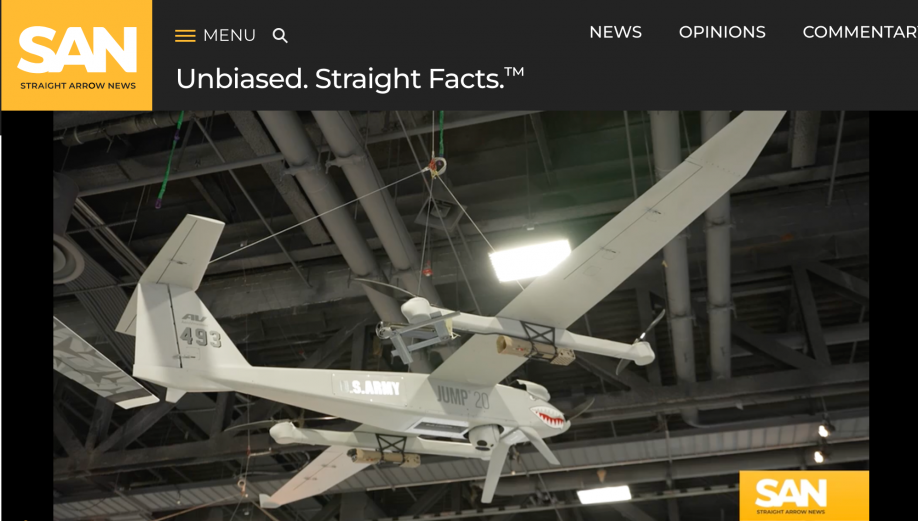
AV Introduces Customizable AI UAV to the Battlefield: Weapon of the Week
December 11, 2024
AV, a leading defense contractor based in Virginia, had a bustling 2024. Known for designing and producing unmanned aerial vehicles (UAVs), the company saw significant milestones this year.
Read More
__banner.png)
NASA and Partners Scaling to New Heights
October 22, 2024
NASA, in partnership with AeroVironment and Aerostar, recently demonstrated a first-of-its-kind air traffic management concept that could pave the way for aircraft to safely operate at higher altitudes. This work seeks to open the door for increased internet coverage, improved disaster response, expanded scientific missions, and even supersonic flight. The concept is referred to as an Upper-Class E traffic management, or ETM.
Read More
__banner.jpg)
AV Secures $54.8 Million Contract Modification for Switchblade Loitering Munition Systems
October 09, 2024
AeroVironment (AV), a global leader in intelligent, multi-domain robotic systems, announced today that the U.S. Army has awarded a $54.8 million contract modification for the production of Switchblade® loitering munition systems. This modification, issued as part of a broader indefinite delivery, indefinite quantity contract, ensures continued support for both the U.S. Army and several allied partners, including Lithuania, Romania, and Sweden.
Work on this contract will be performed in Simi Valley, California, with an estimated completion date of June 30, 2026. The award, which leverages fiscal 2023 and 2024 Army funds along with Foreign Military Sales, highlights AV’s ongoing commitment to delivering proven, battlefield-ready technology that meets the evolving needs of modern armed forces.
“This contract modification allows us to continue delivering Switchblade systems to the U.S. Army and allied partners at speed with upgraded capabilities based on real-time battlefield feedback,” said Brett Hush, AV’s senior vice president and general manager of Loitering Munition Systems. “We are honored to provide the U.S. Army and our international partners with battle-proven technology.”
AV remains focused on providing warfighters with superior, reliable, affordable systems at scale to meet the evolving requirements of its global defense customers.

AV and Our CEO Wahid Nawabi featured in Forbes
October 04, 2024
The article highlights our journey in delivering cutting-edge, uncrewed systems that are shaping the future of defense tech. With Wahid’s leadership, we’re continuing to develop advanced robotic solutions critical to national security.
Read More
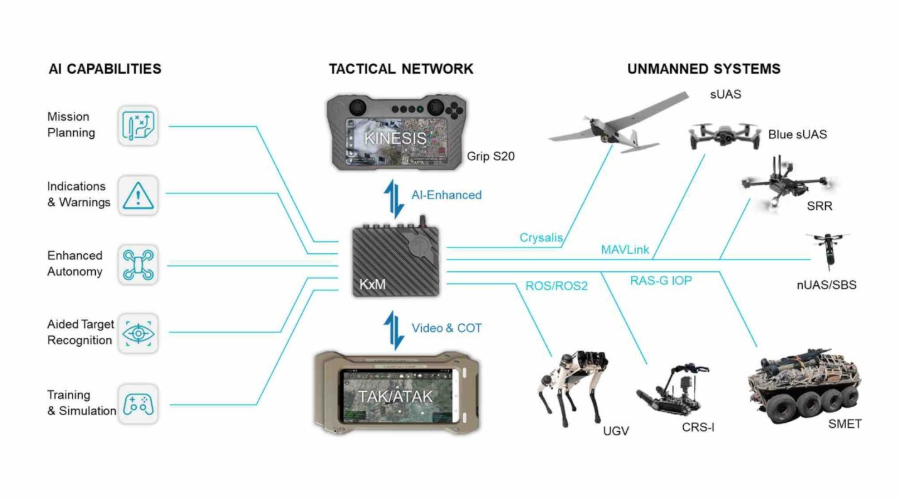
Inside Unmanned Systems: AV’s Tomahawk Ecosystem Unifies Command and Control
July 11, 2024
Kinesis is already being used across the U.S. DOD, by the Five Eyes international intelligence alliance and by other international customers. AeroVironment, then a Tomahawk customer, was confident enough about its open architecture and advanced networking analytics to pay $120 million in cash and stock to acquire Tomahawk Robotics last September. The company continues to exist within AV’s sUAS business unit and operates from Melbourne, Florida.
Read More
__banner.png)
AV CEO Wahid Nawabi sits down with Jim Cramer
July 08, 2024
AV Chairman, President and CEO Wahid Nawabi joins ‘Mad Money’ host Jim Cramer to talk quarterly results, global military conflicts, autonomous weapons and more.
Read More
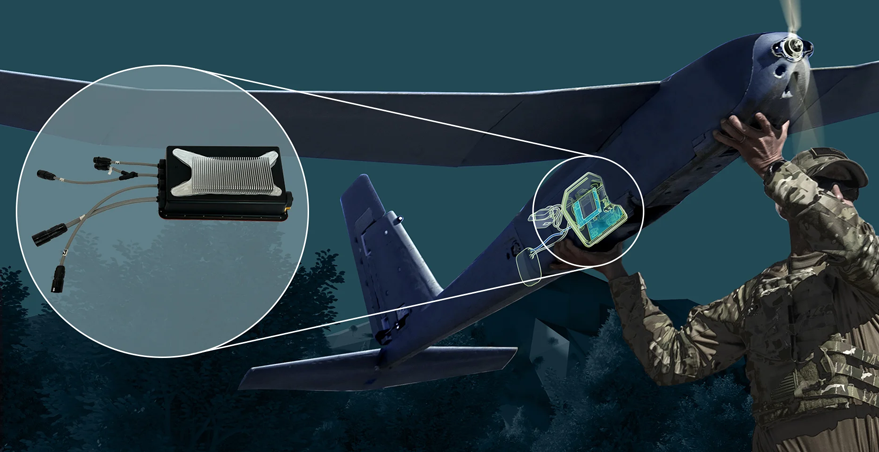
Breaking Defense: With AI and computer vision, almost any platform can be autonomous
June 18, 2024
The use of computer vision and perceptive autonomy can have a profound impact on speeding the Observe, Orient, Decide and Act (OODA) loop. Adding these technological capabilities to robotic systems of all sorts will completely change the way analysts work with sensor feeds and images. We discussed this boon to autonomy with AeroVironment’s Scott Newbern, vice president and chief technology officer, and Timothy Faltemier, vice president and general manager of Learning and Active Perception (LEAP).
Read More

CNBC Closing Bell Overtime: AV's CEO Discusses Replicator, DARPA Ancillary program and Production Capacity
June 07, 2024
Read More
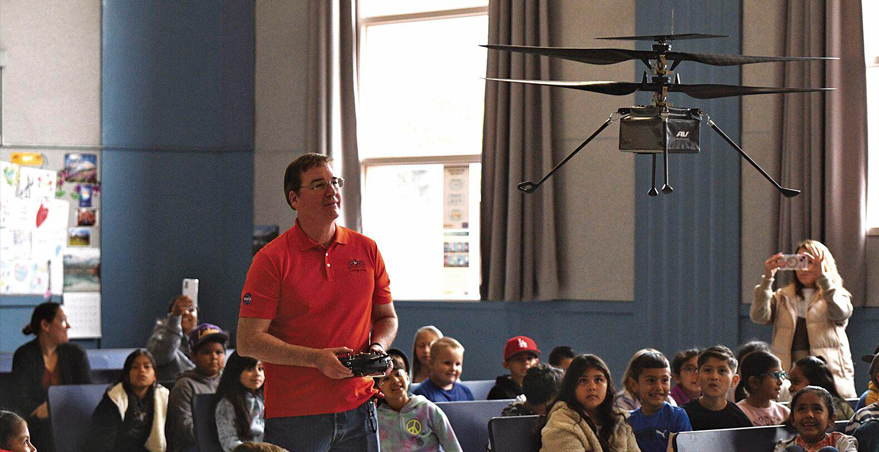
Excited by Ingenuity: Mars helicopter model demonstration wows Flory Academy students
May 02, 2024
Students at a Moorpark school may be inspired to dream of careers in the aerospace industry after witnessing an exciting demonstration of a remote-controlled helicopter similar to the first one to ever fly over the planet Mars.
Read More

Inside Unmanned Systems: Up Close: AV CEO Wahid Nawabi
April 18, 2024
Wahid Nawabi, CEO, AV, outlines the evolving landscape of autonomous defense, emphasizing the importance of AI, computer vision, and collaborative autonomy in enhancing operational capabilities and addressing the challenges of complex mission environments.
Read More
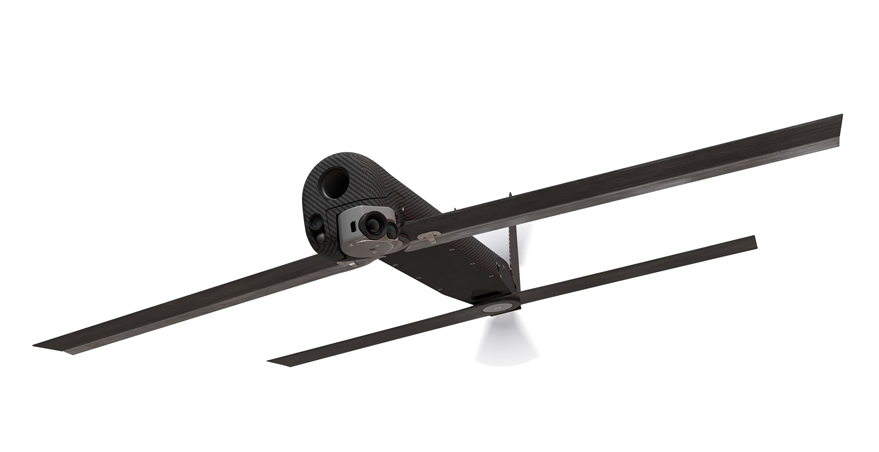
Switchblade's Success in Ukraine
April 12, 2024
As the war in Ukraine has highlighted, not all drones are created equal. Not all drone companies are created equal either. AeroVironment (AV) has a proud 50+ year track record of providing combat-effective unmanned systems to U.S. and allied forces around the world. As such, AV should not have been included in the Wall Street Journal article entitled, “How American Drones Failed to Turn the Tide in Ukraine.”
Currently, thousands of AV unmanned systems, including Switchblades, are employed in Ukraine, successfully operating in the most demanding electronic warfare conditions, and effectively completing their missions. We have been gratified by overwhelming user feedback and demand for additional systems. AV solutions, employed by trained warfighters, are having positive effects on this highly complex battlefield.
AV’s most recent awards to provide Switchblades to both the U.S. Army and U.S. Marine Corps highlight AV’s continued partnership and inherent trust to support the country’s warfighters with precision strike systems. My pledge is that AV will continue to advance the state of the art and provide the best tools to U.S. servicemembers and in defense of American allies' sovereignty.
–Wahid Nawabi

WHNT Visits AV at AUSA Global Force 2024
March 26, 2024
AV's Sr. Director of Business Development, Phil Rottenborn, discusses the latest in uncrewed systems technology at AUSA Global Force.
Read More

CNBC Closing Bell Overtime: AV's CEO Discusses the Role of AI and Autonomy on the Battlefield
March 05, 2024
Don't miss this exclusive conversation between AV's CEO Wahid Nawabi and CNBC Overtime's Morgan L Brennan as they discuss the role of AI and Autonomy on the battlefield. Gain
valuable insights into the demand landscape and how AV is setting the standard for production capabilities.

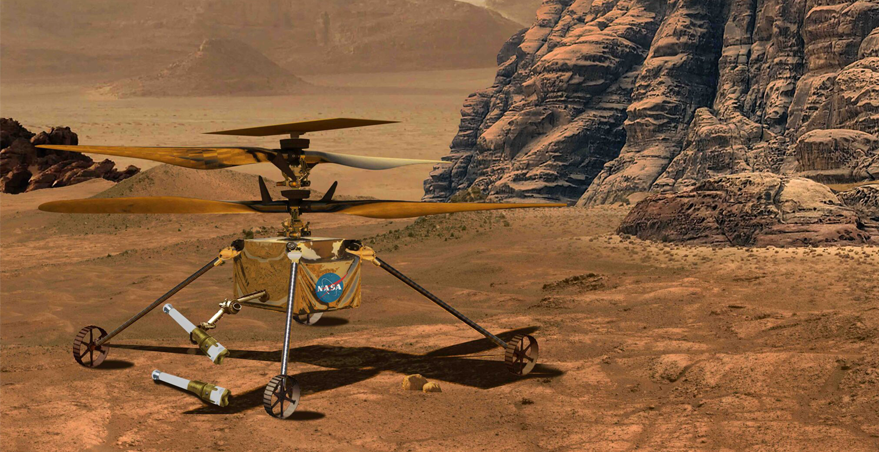
Hoisting a Glass – Saluting the Accomplishments of Ingenuity
January 31, 2024
Two hundred seventeen or so million miles from Earth, Ingenuity rests motionless on the bleak Martian sand. One of the specially crafted rotor blades that’s provided the autonomous helicopter’s lift in the planet’s negligible atmosphere is bent after an abortive descent. Now only its shadow accompanies it.
Read More

Army Looks to Field Loitering Munitions Next Year
December 13, 2023
The Army chose AeroVironment’s Switchblade 600 as the first drone to test for Project LASSO, Army acquisition chief Doug Bush said in October. The units doing the tests will start with more than 100 Switchblade 600s. The Army will invite other companies to compete in follow-on tests, Bush said.
Read More

President of Ukraine met with executives of U.S. defense companies
December 12, 2023
During his visit to the United States, President of Ukraine Volodymyr Zelenskyy met with executives of U.S. defense companies.
In particular, the meeting held at Ukraine House in Washington, DC, was attended by BAE Systems President Tom Arseneault, Day & Zimmermann Chair and CEO Harold Yoh, Boeing President Theodore Colbert, CEO of Sierra Nevada Corporation Fatih Ozmen, Northrop Grumman Vice President Stephen O’Bryan, RTX Vice President Jeff Shockey, Lockheed Martin Vice President Raymond Piselli, General Dynamics Vice President Mark Roualet, D&M Holding CEO Daniel Powers, AeroVironment Vice President Charles Dean.
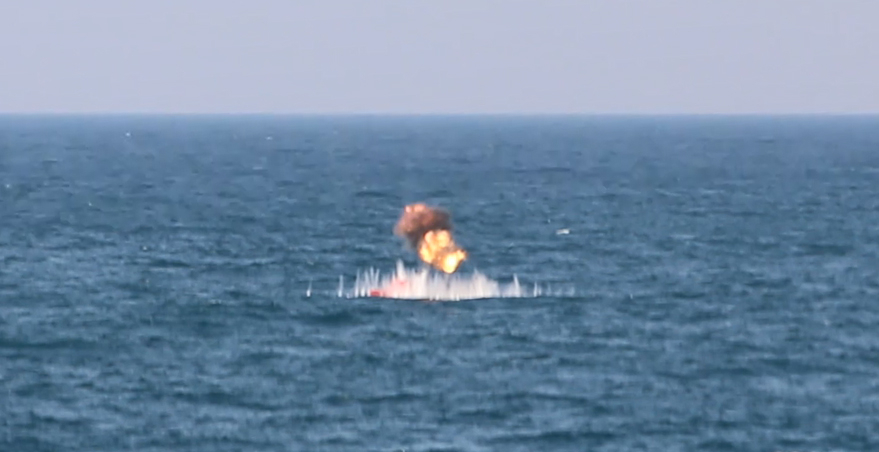
Adding Combat Capability to the Pacific Force: The Role of Integrated Autonomous Systems
December 08, 2023
It is clear that autonomous systems can provide significant enhancements for current operating forces.
As Commodore Darron Kavanagh, Director General Warfare Innovation, Royal Australian Navy Headquarters, has noted: “we have shown through various autonomous warrior exercises, that we can already make important contributions to mission threads which combat commanders need to build out now and even more so going forward.”
Put another way, combatant commanders can conduct mission rehearsals with their forces and can identify gaps to be closed.
Read More

AeroVironment CEO on earnings, AI in conflict areas and demand in Ukraine, Israel
December 06, 2023
Morgan Brennan sits down with AeroVironment CEO Wahid Nawabi to talk the quarter and what's ahead for the company as demand for unmanned defense grows.
Read More

Switchblade Kamikaze Drone-Armed Uncrewed Fast Boat Tested
November 02, 2023
Uncrewed surface vessels with loitering munitions could be well suited to force protection missions, including defending against boat swarms.
Read More

Newsweek: Critical Tank-Killer Switchblades Will Boost Ukraine's Drone Stocks
October 12, 2023
Ukraine is set to receive further deliveries of the Switchblade 600 suicide drone
Read More

Aviation Week: AeroVironment Aims To Command The Drone Swarm
September 28, 2023
The prevailing wisdom is that the future of warfare is robotic. Yet, as things stand, behind each robot is a human with a controller. This 1-to-1 ratio is unwieldy. It limits how many uncrewed systems can be fielded on the battlefield and creates headaches for soldiers who find themselves juggling multiple controllers and robotic systems at once.
Read More

CNBC–Closing Bell: Overtime
September 06, 2023
"The future of defense is all about unmanned systems," says AeroVironment CEO Wahid Nawabi. Wahid Nawabi, AeroVironment CEO, joins ‘Closing Bell Overtime’ to talk quarterly earnings, international demand, tech innovation in the defense sector and more.
Read More

7 Companies Leading the Way in Advanced AI and Robotics
August 10, 2023
“Enabled by AI, AeroVironment’s future UAS projects will be on the cutting edge of the defense industry.” Many attribute the recent stock surge to AI stock popularity. At the same time, it’s crucial to note that numerous companies are working silently beneath the radar. These companies are harnessing advanced AI and robotics to enhance operational efficiency. This quiet revolution is not limited to the technology sector but spans industries like manufacturing, logistics, healthcare, and retail.
Read More

Newsweek: Rare Footage Shows U.S. Made Switchblade Drones in Action in Ukraine
June 22, 2023
New footage circulating online shows Ukrainian forces using U.S.-supplied Switchblade drones as Kyiv's counteroffensive gathers pace.
In the video, a Ukrainian drone operator can be seen preparing to launch the unmanned aerial vehicle (UAV) before the clip shows several shots from the vantage point of the loitering munition.
Read More
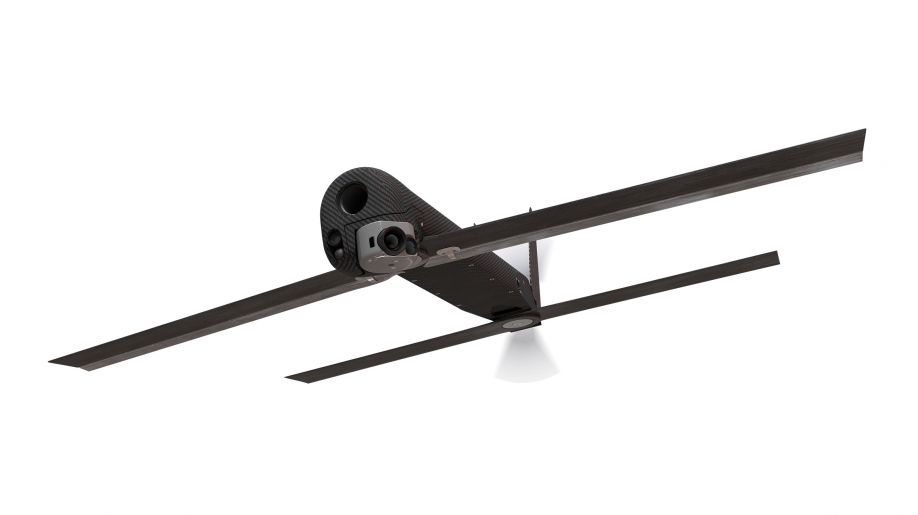
Can American Switchblades Help Ukraine Win the War?
May 18, 2023
In late April, a more powerful version of a U.S. drone made its appearance on the battlefields of Ukraine. It’s called the Switchblade 600, which is an upgraded version of the Switchblade 300. Khrystyna
Shevchenko visited the drone production facility in Los Angeles and has this story.
Read More

Breaking Defense: After ‘Inflection Point’ of Ukraine, Switchblade Maker AeroVironment Unveils Upgrades, Goes Global
May 11, 2023
SOF WEEK 2023 — California firm AeroVironment has been producing loitering munitions and other drones for the US military for more than a decade, but the war in Ukraine has become an “inflection point” for the firm, according to CEO Wahid Nawabi.
Through security aid packages, the Pentagon has sent hundreds of the company’s Switchblade suicide drones — both the smaller 300 version and the larger 600 version — to Ukraine, along with AeroVironment’s bigger Puma surveillance UAV. The systems’ reported success on the battlefield has prompted other militaries to take notice.
Read More

How Makers of the Switchblade Suicide Drone are Changing the Ukraine War
April 11, 2023
If it wasn’t for Western weapons, the war in Ukraine most likely would have ended weeks after it began. For the Ukrainians, one of the most dependable weapons systems in use is also one of the smallest, the Switchblade 300. The small loitering munition is made by AeroVironment, a global leader in intelligent robotics. Every branch of the U.S. Armed Services uses drones made by AeroVironment. Ingenuity, the helicopter NASA is flying around on Mars, that was also built by AeroVironment.
Read More

Forbes: Ukraine’s Next-Generation Drone Fleet Is Packed With Upgrades
March 01, 2023
The latest U.S. security assistance package to Ukraine shows a commitment to enhanced drones, with four new types specifically mentioned:
— The Jump 20 UAS is an unusual vertical take-off tactical reconnaissance machine from AeroVironment, Inc. With an endurance of 14 hours and a range of over a hundred miles , the Jump-20 is perhaps nearest to Russia’s Orlan-10, a machine which is much derided for its crude construction but gives Russia an envied long-endurance observation platform. The more sophisticated Jump-20 will provide intelligence for HIMARS and the new Ground Launched Small Diameter Bomb and other long-range weapons as Ukraine hits targets further behind the front line.
Read More

USA Today: It's hard, but they're holding on': On the ground in Ukraine, the war depends on U.S. weapons
February 22, 2023
One evening northwest of Fury’s position, in an industrial plant that Ukraine’s military is using as a base for elite units to sleep in, Biker explained how the Switchblade 300, which can be carried in a backpack, works.
It launches from a tube. Its small wings and an electric propeller then unfold. It flies to a target monitored via a tablet and special software. Then it dive-bombs kamikaze-like to its prey and detonates an explosive warhead.
Read More

Breaking Defense – A Solution Rises for Middle East Nations that Demand Persistent ISR for Border and Maritime Security
February 21, 2023
In this Q&A with Philip Mahill, senior director, Medium UAS Business Development for AeroVironment, he discusses: the regional threat scenario, the latest news on the Army’s Future Tactical Unmanned Aircraft System (FTUAS) program, and the reasons why the company’s JUMP 20 VTOL unmanned system is suited to US needs in the FTUAS program and also UAE/Middle East needs to meet their specific threat scenarios.
Read More
Aerospace America: Martian Aviator
January 27, 2023
Even before the now-famous Ingenuity helicopter made its first flight on Mars in 2021, Ben Pipenberg and his colleagues at drone maker AeroVironment began thinking about the next iteration of the aircraft whose airframe and rotor system they built. Knowing about the plan to bring samples of Mars back to Earth, they conceptualized and prototyped a helo with a gripper capable of grasping sample tubes and wheels to carefully roll up to an ascent vehicle.
Read More

CNBC: CEO Wahid Nawabi Featured on Mad Money
January 06, 2023
CEO Wahid Nawabi visits Mad Money and discuss the benefits of Switchblade loitering missile systems and how they can help with the war in Ukraine.
Read More

Breaking Defense – Against Near Peers, Unmanned Systems Must Maintain Autonomy Even When Contested
December 21, 2022
Continued operation in RF environments — whether that’s GPS denial or communications disruption — is arguably the number-one requirement for overmatch against near peers.
Though the Indo-Pacific region and Europe present widely divergent areas of operation, one of the characteristics they assuredly have in common is that both kinetic and non-kinetic operations against adversaries in those regions will take place in contested environments.
Read More

KCLU: A Ventura County company is manufacturing a high-tech drone which is being used in Ukraine
October 25, 2022
The small and precise weapons are part of a US military aid package delivered to help Ukraine fight back amid Russia’s invasion.
A so-called kamikaze drone, that dive-bombs its target, is being built at a secret facility in Ventura County. The small and precise weapons are part of a US military aid package delivered to help Ukraine fight back amid Russia’s invasion, which started 8 months ago.
Read More
Switchblade Kamikaze Drone Production to Ramp Up Following Ukraine Use
October 11, 2022
WASHINGTON — AeroVironment, the maker of the Switchblade loitering munition Ukraine has used against Russia in recent months, is planning to ramp up production of the heavier-duty version.
Ukraine has had repeated battlefield successes with the Switchblade 300 since the United States shipped it 400 of the lighter-weight loitering munition earlier this year, Charlie Dean, AeroVironment’s vice president of sales and business development, said in an interview with Defense News at the Association of the U.S. Army’s conference on Monday.
Read More
AeroVironment Signs Deal With Persistent Systems to Join Wave Relay® Ecosystem
September 13, 2022
Read More
Business Insider: Drones That Choose Their Own Targets Could Change Modern Warfare
August 16, 2022
- Autonomous drones could soon change warfare by removing the need for a human to choose a target and fire.
- The US shipped hundreds of semi autonomous Switchblade drones to Ukraine.
- Modern drones use artificial intelligence more and more, raising concerns for some experts.

This UGV Miracle Weapon Should Now Save the Grunewald
August 04, 2022
It’s insane. The Berlin Grunewald is on fire. And cannot be deleted. Ammunition and explosions made it impossible for the fire brigade to be deployed on the ground for hours. But one gets there where no one else is allowed to go. Blasting robot Teodor.
The robot is controlled by Bundeswehr General Jürgen Karl Uchtmann (63), commander of the Berlin State Command. “We were here with 20 emergency services and were requested by the fire brigade at six o’clock this morning. We bring Teodor to the scene of the fire to clarify the situation on site.”
Read More
Breaking Defense – Bigger, Faster, Longer: As Market Grows, Loitering Munition Makers Eye Next Revolution
July 21, 2022
WASHINGTON: As the conflict in Ukraine demonstrated the lethal effectiveness of loitering munitions, the makers of the modern weapons said they’re responding to global demand by working to improve their
products into more capable and increasingly survivable systems to stay ahead in the market.

Inside Unmanned Systems: Up Close With Wahid Nawabi, Chairman, President & CEO of AeroVironment
July 07, 2022
From Switchblade® to Quantix™, AeroVironment is filling the skies of Ukraine with capable UAS. For Wahid Nawabi, the reasons are both technical and biographical.
These days, AeroVironment’s website comes out, well, firing. “We stand for freedom,” the message begins, “and we stand with our allies and sovereign nations in their right to protect their homelands and their very lives when this fundamental right is threatened.”
Read More
CNN "First Move" - Russia's War on Ukraine
May 04, 2022
Drone Defence–AeroVironment’s Switchblade “kamikaze” drone has become a key part of military aid to Ukraine. AeroVironment CEO, Wahid Nawabi talks ethics and defending against aggression – all over the world.
Read More
Fox News: Ukraine Using Kamikaze Drones on the Front Lines
May 03, 2022
Fox News’ Douglas Kennedy reports on the kamikaze switchblade drones used to aid Ukraine's fight against Russia.
Read More
CBS Sunday Morning: The Switchblade "kamikaze" Drone
May 01, 2022
A one-time-use unmanned aerial vehicle, the Switchblade drone is a powerful weapon that can dive bomb its targets, such as tanks and artillery nests, at a range of up to 30 miles. So far, 700 Switchblades – large and small – have been supplied to Ukraine for use against Russian forces. CBS News national security correspondent David Martin talks with the CEO of Switchblade manufacturer Aerovironment, Wahid Nawabi, who as a child in Afghanistan saw the effects of an invading Russian army – and the power of innovative defense technology.
Read More
Defense News – Industry Perspective: Creating a New Paradigm for U.S. Force Overmatch
April 01, 2022
Since the end of World War II, the United States has achieved force overmatch by deploying a range of very large, highly complex and extremely expensive assets that ranged from fighter jets and aircraft carriers to satellites and submarines.
And while this overmatch did not always translate into victory on the battlefield, it was undeniably effective in containing the Soviet threat and bringing the Cold War to an end.
Today, this overmatch is no longer absolute, thanks to the rise of
peer and near-peer adversaries. If the United States is to continue to
dominate the battle space, the military must think creatively about new
ways of achieving overmatch, reducing its reliance on large, expensive
and vulnerable military assets, and prioritizing resiliency, flexibility
and interoperability.

Forbes: Shadowy Switchblade Kamikaze Drones On Their Way To Ukraine: Here’s What We Know About Them
March 17, 2022
The U.S. is providing 100 Switchblade loitering munitions to Ukraine, the Biden administration revealed Wednesday, in addition to the thousands of Javelin anti-tank missiles and Stinger anti-aircraft missile already in country or on the way. The Switchblade, sometimes described as a kamikaze drone, has received much less publicity that its two stablemates, but is no less lethal.
Read More
How Switchblade Drones Could Turn the Tide of Ukraine War
March 17, 2022
As Ukrainian President Volodymyr Zelensky urged members of Congress for more help against Russia on Wednesday, President Joe Biden announced an additional $800 million in security assistance to Ukraine.
Under the new massive military aid package, Ukraine will be provided with long-range missiles and 100 "tactical unmanned aerial systems," as Biden called them. More precisely, these are Switchblade armed drones.
Read More
Distributed Warfare and Uncrewed Systems in the New Era of Strategic Competition
March 09, 2022
As the Pentagon moves resources to address the new era of strategic competition, uncrewed systems – in the air, in the sea, and on land – will be the tip of the sword for our sailors, marines, soldiers and airmen. This era is evolving to one that is multi-domain, features rising peer and near-peer adversaries, and is driven by industry innovation.
For the U.S. to maintain its security advantage in a multi-domain battlespace where force overmatch is no longer an absolute, a strategic shift needs to take place from a reliance on large and expensive traditional military assets to a distributed warfare and force structure.
Wahid Nawabi, President, Chairman and CEO of AeroVironment, a global leader in intelligent, multi-domain robotic systems, spoke with AUVSI about how a transition to distributed warfare, supported by unmanned systems, will maintain U.S. competitiveness this new era.
Read More
A Year After Landing on Mars, One-of-a-Kind Helicopter Developed in Ventura County Still Flying
February 25, 2022
"Ingenuity" helicopter far exceeding expectations; Chopper has now flown nearly four times more missions on Mars than originally planned. It's a tiny, experimental unmanned helicopter built in Ventura County that made headlines around the world, as it made the first powered flight in the atmosphere of another planet. While the headlines are gone, Ingenuity is still flying, long past its projected timeline.
Read More
NBC Nightly News: Exclusive Look at New 'Killer' Drone Small Enough to Fit in a Backpack
December 06, 2021
The Switchblade drone doesn’t launch missiles, but is itself a missile. NBC News’ Ken Dilanian reports from the Utah desert where he saw a demonstration of the so-called “killer” drone being directed to an empty truck before exploding. The technology can also present new risks for both the U.S. and its adversaries, experts say.
Read More
Kamikaze Drones: A new weapon brings power and peril to the U.S. Military
December 06, 2021
DUGWAY PROVING GROUND, Utah—The killer drone whooshed out of its launch tube, spreading its carbon wings and shooting into the sky.
Flying too fast for the naked eye to track, the battery-powered robot circled the Utah desert, hunting for the target it had been programmed to strike. Moments later, the drone sailed through the driver’s side window of an empty pick-up truck and exploded in a fireball.
“Good hit,” exclaimed an operator from AeroVironment, the company that produces the drone and sells it to the U.S. military.
Read More
Puma AE UAS in Action with Canadian and U.S. Coast Guards on a Joint Mission to Track and Seize $638MM Worth of Cocaine
December 02, 2021
In recent weeks, the crew of the Arctic and offshore patrol ship HMCS Harry DeWolf helped two U.S. Coast Guard cutters seize a total of 11,800
kilos of cocaine from eight drug smuggling vessels off the Pacific coast of Latin America. The cocaine is estimated to be worth about $638
million.

AUSA 2021: AeroVironment vies for FTUAS
October 13, 2021
The US Army plans to procure a Future Tactical UAS (FTUAS) to replace the Textron RQ-7B Shadow tactical UAV currently in service with its Brigade Combat Teams.
One of the contenders for FTUAS is AeroVironment with its JUMP 20 system; in this video, the company's business development director Terry Stapleton discusses some of the features of this UAV and its progress to date in FTUAS assessments.
Read More
CRYSALIS Responds to Technology Pull
October 13, 2021
One very rapid technology thrust in the unmanned vehicle market is in ground control stations – with good reasons, given the proliferation of such systems and the more demanding requirements being placed upon them. One ground control solution that caught MON’s attention is AeroVironment’s new offering, CRYSALIS, designed to replace the legacy, common-use GCS employed with the company’s existing RAVEN, WASP and PUMA sUAS. CRYSALIS responds to the pull of technology and the sophistication of today’s UAS operator.
Read More
AeroVironment expands footprint at Spaceport America
October 07, 2021
October 7, 2021, Sierra County, NM- AeroVironment, Inc. (NASDAQ: AVAV) is expanding its footprint at Spaceport America bringing two new unmanned aircraft systems (UAS) projects to New Mexico for testing and training. Operations forJUMP 20 medium unmanned aircraft systems (MUAS) and tactical unmanned aircraft systems (TUAS) have begun out of the Spaceport’s Vertical Launch Area. AeroVironment first became a tenant of the spaceport with the HAPSMobile Sunglider project, which flew twice in 2020.
“We developed a great relationship with AeroVironment last year, which has now expanded with these two new UAS projects,” said Scott McLaughlin, Executive Director of the New Mexico Spaceport Authority. “We appreciate their confidence in us and what we offer with our employees, our facilities, restricted airspace, remote location, and great weather for flight. Spaceport America’s business continues to grow and bring value to New Mexico.”

Kratos' New Airwolf Combat Drone Has Launched A Switchblade Loitering Munition In Flight
September 22, 2021
Kratos has demonstrated the ability of its Airwolf unmanned aircraft to air-launch an AeroVironment Switchblade loitering munition, also commonly referred to as a "suicide drone." This test has opened up a significant new "opportunity space" for how Airwolf, which is derived from its MQM-178 Firejet aerial target, could be employed operationally. The company has only given out relatively limited details about Airwolf, which is the smallest and cheapest of its publicly disclosed tactical designs, in the past and just released its first picture of one of these drones earlier this month. You can read more about what we had already been able to glean about this drone here.
Read More
Has the evolution of the commercial drone industry created opportunities or cultivated misconceptions?
August 16, 2021
For a long time, excitement and potential drove the commercial drone industry in a way that could literally be calculated. Countless reports talked up the billions of dollars that commercial drone technology represented, but whether it was the $82 billion estimated by AUVSI or the $127 billion that PwC predicted, the hype associated with drones was mostly irrelevant to the actual users that wanted to adopt the technology to create value. Plenty have done just that in very defined ways over the past few years, but just as the drone industry was in the midst of fully transitioning from hype to reality, COVID-19 changed the paradigm.
As literal social distancing tools, the pandemic highlighted how drones could be utilized in ways that were never envisioned but nonetheless created real value. However, those new opportunities have been complicated by misconceptions that predate the pandemic. Additionally, the regulatory challenges with legally taking a drone into the sky that users have to sort through are just as relevant now as they were in the midst of that hype cycle. What has this evolution of the commercial drone industry meant to the people that are working to define the value of the technology in the present and future?
That very topic is a focus of numerous conference sessions at the upcoming Commercial UAV Expo, where professionals from across the space will come together for what is now recognized as the world's largest show for professionals integrating commercial drone technology. In preparation of the event, we connected with numerous experts across the space to capture their insights around how expectations associated with the technology will impact the market in the short and long term.
Read More
IUS: Hitting Double Digits, Mars Helicopter Ingenuity Has Exceeded Expectations
August 12, 2021
“This flight was specifically designed to hit some high-value science targets, to demonstrate, basically, aerial imaging of science sites.” Ben Pipenberg, senior aeromechanical engineer at AeroVironment, was explaining. “That was kind of the first time we’ve really done that in a targeted way, so this was a much more complicated flight.”
Pipenberg was extolling Mars Helicopter Ingenuity’s 10th foray since it first lifted off from the Red Planet’s surface back in April. Flight 10 was something of a watershed; it saw the little vehicle Pipenberg and his team had birthed in concert with NASA/JPL and other leading-edge firms pass the mile marker on distance flown while ranging further and further afield from its mid-February arrival on Mars in the belly of the Perseverance land rover.
Pippen laughed after hearing Ingenuity’s various destinations described as “a cruise ship on Mars.” Flight 10 came on July 24th, after a hoped-for initial set of five technology trips had been extended to operational demonstrations and journeys to other “airfields.” The 10th trip initiated what might be called an investigatory phase, setting an altitude record (40 feet) and visiting 10 waypoints en route to a rock formation called “Raised Ridges.” The color photos and 3D images it collected will inform Perseverance’s up-close exploration of the outcrop, in part to seek evidence for a watery past on Mars. That’s already begun: an 11th flight, on August 5th, positioned Ingenuity as a scout to support Perseverance’s work.
Read More
Flight 9 Was a Nail-Biter, but Ingenuity Came Through With Flying Colors
July 09, 2021
It has been a week of heightened apprehension on the Mars Helicopter team as we prepared a major flight challenge for Ingenuity. We uplinked instructions for the flight, which occurred Monday, July 5 at 2:03 am PT, and waited nervously for results to arrive from Mars later that morning. The mood in the ground control room was jubilant when we learned that Ingenuity was alive and well after completing a journey spanning 2,051 feet (625 meters) of challenging terrain.
Flight 9 was not like the flights that came before it. It broke our records for flight duration and cruise speed, and it nearly quadrupled the distance flown between two airfields. But what really set the flight apart was the terrain that Ingenuity had to negotiate during its 2 minutes and 46 seconds in the air – an area called “Séítah” that would be difficult to traverse with a ground vehicle like the Perseverance rover. This flight was also explicitly designed to have science value by providing the first close view of major science targets that the rover will not reach for quite some time.
Read More
‘Huge leap’ for NASA’s Mars helicopter ushers new mission support role
July 09, 2021
The Séítah region on Mars, filled with rocks and sand dunes, was too treacherous for NASA’s Perseverance rover to drive across. So Ingenuity, the tiny helicopter accompanying the rover, flew over the area on Monday and snapped some photos of a key spot on the other side. In less than three minutes, Ingenuity spared Perseverance the months it would have had to spend driving to take its own photos.
The quick Monday morning jump across Séítah was Ingenuity’s ninth flight on Mars so far, but it marked the first time the chopper lent a helping hand to Perseverance in its hunt for ancient signs of life at the Red Planet’s Jezero Crater. The four-pound helicopter arrived on Mars on February 14th, attached to Perseverance’s underside, and became the first object to take powered flight on another world on April 19th. Its initial set of flights served as increasingly complex practice tests to demonstrate how off-world rotorcraft can buzz around places that wheeled rovers can’t go.
But on Monday, NASA engineers pushed Ingenuity’s limits further than ever. In 166 seconds, Ingenuity flew roughly 11mph for almost a half-mile, or 2,050 feet — a far greater distance than its most recent flight in June, which tallied 525 feet. The copter buzzed around different corners of Séítah and snapped photos of its borders, where junctures between different rock formations — called contacts, in geology lingo — make for some of the most scientifically intriguing targets in Perseverance’s hunt for fossilized microbial life.
Read More
Inside The Ingenuity Helicopter: Teamwork on Mars
July 08, 2021
April 19th saw what some have christened “a second Wright Brothers moment”—namely, the successful first powered controlled flight by an aircraft on another world. Reaching Mars on the underside of the Perseverance rover, the tiny, autonomous Mars Ingenuity Helicopter (5.4" x 7.7" x 6.4") spun its 4-foot rotors and hovered 10 feet off the ground for 30 seconds. By its third flight, a few days later, Ingenuity would rise 16 feet (5 meters) up, and fly 164 feet (50 meters) at a top speed of 6.6 ft/sec (2 m/sec). Back in 1903, the Wright Brothers logged 120 feet to complete the first controlled heavier-than-air powered flight. Now, squaring that circle, Ingenuity carries a piece of fab-ric from the Wright Flyer’s wing, and its flight site is called Wright Brothers Field.
Six weeks and six flights into its mission as we write, Ingenuity has demonstrated the ability to fly on a planet more than 170 million miles from earth in an atmosphere 1% as thick as ours. The near-miniature ve-hicle has proved to be an intrepid explorer even as it’s survived a computer anomaly on its most recent mission. Talk about punching above your weight.
British Navy uses Puma drone to support landing operations of Royal Marines Commando
June 29, 2021
According to information released by the British Navy on June 24, 2021, Puma drone has been used by the British Navy to support HMS Albion amphibious transport dock and Royal Marines of 45 Commando as part of the Littoral Response Group (North) deployment to the North and Baltic Seas, including during their participation in the large-scale Baltops exercises alongside militaries from 17 other nations.
The RQ-20 Puma is a small, electrically powered, American, hand-launched unmanned aircraft system produced by the American company AeroVironment based in California. The Puma AE can operate under extreme weather conditions including temperatures ranging from −20 to 120 °F (−29 to 49 °C), wind speeds up to 25 knots (29 mph; 46 km/h), and an inch of rain per hour.
The Puma is just over 1.35 m long, with a wingspan of 2.75 m. It can fly at a maximum altitude of 500ft and has a maximum speed of 83km/h and range of 15km. The flight endurance of the UAS is two hours.
The payload of the Puma includes an electro-optical (EO), infrared (IR) camera, and IR Illuminator. It can be used to conduct reconnaissance and intelligence gathering missions over sea or land. The drone can monitor an area larger than the size of Greater Manchester during its flights, feeding back real-time footage to help sailors and Royal Marines make accurate tactical decisions.
Read More
Future of Drones: AeroVironment’s Wahid Nawabi talks about the Mars helicopter and the industrial uses for unmanned aircraft
June 22, 2021
While there are other companies in the world that make drones and ground robots, none of those companies just focus on those technologies. That’s according to Wahid Nawabi, chief executive of AeroVironment Inc., the Simi Valley robotics company that made history this spring as the inventor of Ingenuity, the first aircraft to fly on another planet, in this case Mars. At AeroVironment, the focus is only on robots – originally drones, and increasingly ground robots and even underwater robots, said Nawabi, who joined the company in 2011 and took the top job five years ago. AeroVironment recently announced it would relocate its headquarters from Simi Valley to Arlington, Va. effective June 15.
Drone maker AeroVironment moves headquarters from Simi Valley to D.C. area
June 18, 2021
Unmanned aircraft firm AeroVironment, Inc. this week announced the relocation of its corporate headquarters from Simi Valley to Arlington, Virginia.
But officials with the defense contractor – in the spotlight recently for its role in the creation of NASA's Mars Ingenuity helicopter – said it will keep its former headquarters at 900 Innovators Way open for business. It will also continue operations at its three other Simi Valley facilities and one in Moorpark.
Read More
CNBC: How the drone market is changing
June 14, 2021
Drones in the air can now partner with robots on the ground. CNBC’s Jane Wells reports from Moorpark, California, on changes coming to the drone industry.
Read More

Puma UAVs Make Big Impact on Royal Navy OPV
June 10, 2021
HMS Tamar made extensive use of small Puma aircraft during trials with the Royal Marines and the Met Police as the ship practices for ‘constabulary duties’ when she deploys for the first time this summer.
Although Tamar has a flight deck, she doesn’t carry a helicopter on a regular basis – there’s no hangar, so Merlin and Wildcat helicopters only use the ship for refuelling, collecting supplies or making a short stop.
The Puma could fulfil some of the helicopter’s intelligence-gathering role – with its 50-times zoom camera it feeds live footage back to a mother ship at ranges up to a dozen miles.
Building on their experiences aboard HMS Albion in the Mediterranean last year, a team from 700X Naval Air Squadron – the Fleet Air Arm’s only pilotless squadron – brought their drone to Tamar.
Just over 4½ft long, with a wingspan of 9ft and weighing as much as six bags of sugar, Puma can survey an area of up to 270 square miles of ocean – that’s larger than Greater Manchester – looking for suspicious activity during sorties lasting up to 2½ hours.
Read More
Inside Ingenuity with AeroVironment Part III: The Meaning of Martian Flight
May 17, 2021
On Friday, May 7, the Ingenuity Mars Helicopter left both Wright Brothers Field and the Perseverance Rover behind. Flying for 110 seconds, Ingenuity traveled 423 feet at a new height of 33 feet, capturing high resolution color images before landing at its new Red Planet home, which bears the tepid but significant name Airfield B. Ingenuity had become an operational scout in addition to its original role as a technology demonstrator.
In previous reports, key members of the AeroVironment team talked with Inside Unmanned Systems about the company’s development of Ingenuity’s airframe and some major subsystems, its collaborations with NASA, JPL and other aviation/aerospace companies, and the challenges involved with learning to fly in Mars’ rarified atmosphere.
Read More
60 Minutes: NASA Begins Search for Ancient Life on Mars After Arrival of Perseverance, Ingenuity Spacecrafts
May 09, 2021
We first told you about the tiny helicopter Ingenuity and the one-ton rover Perseverance nearly a year ago before they left Earth, but they've come a very long way since then. In February, they landed in a hazardous and previously unexplored part of Mars called the Jezero Crater, where Perseverance will be looking for signs of ancient life. Last month, Ingenuity disconnected from Perseverance's belly and made history -- performing the first flights ever in the atmosphere of another planet. It's hard to imagine but worth remembering as you watch what we're about to show you, that this all happened millions of miles away, in outer space.
Read More
Inside Ingenuity with AeroVironment Part II: Challenges Overcome
May 05, 2021
As of Friday, April 30 (local time), the Ingenuity Mars Helicopter had completed its fourth successful flight, exceeding expectations and moving from being a technical to an operational demonstrator.
In Part One of “Inside Ingenuity with AeroVironment—Designing It,” key personnel from the company talked about designing and developing Ingenuity’s airframe and some of its major subsystems, including its rotor blades and hub and control mechanism hardware. They also discussed how AeroVironment worked with JPL, Lockheed Martin and others to integrate its work into a vehicle capable of reaching and operating on Mars.
Now, in Part Two—”Challenges Overcome”—the engineering team recalls surmounting obstacles so Ingenuity and its 4-foot rotor blades could master the ultra-thin atmosphere of the red planet.
Read More
Inside Ingenuity With AeroVironment, Part One: Designing It
April 27, 2021
April 19th saw what some have christened “a second Wright Brothers moment”—namely, the successful first powered controlled flight by an aircraft on another world. Reaching Mars on the underside of the Perseverance rover, the tiny, autonomous Mars Ingenuity Helicopter (5.4’ x 7.7’ x 6.4”) spun its 4-foot rotors and hovered 10 feet off the ground for 30 seconds.
Read More
National Geographic - NASA Mars helicopter makes history as first vehicle to fly on another planet
April 19, 2021
A small helicopter opened a new chapter of space exploration this morning when it lifted off the surface of Mars, marking humankind’s first powered flight on another planet.
Read More
WSJ – How NASA’s Ingenuity Helicopter Was Developed Here on Earth
April 09, 2021
NASA's Ingenuity helicopter, which was carried to Mars by the Perseverance rover, is set for the first ever flight on the red planet. WSJ goes inside the company that partnered with NASA to design and build an aircraft for a completely different atmosphere from Earth.
Read More
US Navy plans to buy 120 submarine-launched Blackwing UAVs
March 10, 2021
The US Navy (USN) plans to acquire up to 120 AeroVironment Blackwing unmanned air vehicles (UAVs) for its submarines.
The first drone is expected to be delivered as early as August 2021, says the service in a sole source notice it posted online on 9 March. The last UAV is scheduled to be delivered by May 2023. The Blackwing can be launched into the air via a submerged submarine. The UAV is packed into a canister that is ejected from an underwater submarine, the canister then floats to the surface and shoots the Blackwing into the air.
In order to fit inside a canister, the small UAV has two pop-out wing sets. It has a wingspan of 68.6cm (27in) and is powered by an electric motor-driven pusher propeller. On its nose, the UAV carries electro-optical and infrared sensors. It also carries GPS and inertial navigation systems. Those sensors combined with a tactical data link allow the UAV to pass back targeting information to a submarine.
In order to fit inside a canister, the small UAV has two pop-out wing sets. It has a wingspan of 68.6cm (27in) and is powered by an electric motor-driven pusher propeller. On its nose, the UAV carries electro-optical and infrared sensors. It also carries GPS and inertial navigation systems. Those sensors combined with a tactical data link allow the UAV to pass back targeting information to a submarine.
The service has been experimenting with the Blackwing for several years. After several demonstrations in 2019 and 2020, initial operational capability for the Blackwing was declared in September, said Rear Admiral Dave Goggins, programme executive officer for submarines, reported Seapower magazine last November. The USN has demonstrated launching the Blackwing from the Los Angeles-class fast-attack submarine USS Annapolis, he said.
Read More
Defence & Security: Rapidly Deployable UAV Situational Awareness for International Defence Forces with combined lethality
November 24, 2020
We recently saw the announcement of the Switchblade 600 by AeroVironment, one of the global leaders in military rapidly deployable unmanned aerial vehicle platforms. With technology rapidly evolving, offering frontline forces the latest in situational awareness, we spoke with Steve Gitlin, CMO at AeroVironment just how far these deployable systems have come and how militaries can have access to not only situational awareness in real time, but with lethality options to neutralize and win engagement in the battlefield.
Read More
HAPSMobile’s Stratospheric Test Flight Opens A New Chapter for the Internet
October 22, 2020
HAPSMobile Inc., a SoftBank Corp. (TOKYO: 9434) subsidiary launched in 2017 with the mission of bridging the digital divide, marked two major milestones on September 21, 2020. First, the solar-powered, unmanned aircraft “Sunglider” took flight in the stratosphere for the first time. Second, Sunglider also successfully delivered an LTE connection from the stratosphere during the flight, marking a world first for a fixed-wing High Altitude Platform Station (HAPS) autonomous aircraft.
With a communications payload under its wing, Sunglider functions like a base station floating in the sky. Circling the stratosphere above the earth, it transmits radio waves down to mobile phones on the ground. This means it can reach areas where it is difficult to build infrastructure, including remote areas and developing countries. Since it flies in the stratosphere and is therefore unaffected by weather on the ground, Sunglider can also deliver connectivity when disasters strike.
While the concept may seem far out--in fact, HAPSMobile President & CEO Junichi Miyakawa was originally inspired by the Japanese fantasy anime classic “Castle in the Sky” before launching the business--HAPSMobile’s landmark flight and communication tests have shown that it is making great progress on its mission to connect the unconnected, which now accounts for roughly half of the world’s population.
Read More
HAPSMobile Successfully Completes Latest Test Flight of its Unmanned Aircraft Designed for Stratospheric Telecommunications Platform Systems
July 29, 2020
HAPSMobile Inc. (“HAPSMobile”), a subsidiary of SoftBank Corp. (TOKYO: 9434) and minority-owned by AeroVironment, Inc. (NASDAQ: AVAV, “AeroVironment”), today announced the fourth successful test flight of its “Sunglider” solar-powered high-altitude platform system (HAPS). The flight took place on July 23, 2020 (PT) at Spaceport America (“SpA”) in New Mexico. With all basic aircraft tests for the unmanned aircraft system (UAS) now complete, HAPSMobile will proceed with preparations for stratospheric test flights.
In this test flight, Sunglider, the newly renamed UAS designed for stratospheric telecommunications platforms, reached altitudes higher than those of previous flights and maintained high altitudes for a long duration. Sunglider also successfully passed all test points, including flight speed changes, steep turns, automated flight control in the event of interrupted communications with the Ground Control System, and in-flight balance control.
In addition to the Hawaiian island of Lanai, HAPSMobile built a new test site at SpA as part of its mid- to long-term business plan. Since SpA offers flexibility in coordinating test flight schedules, there will be opportunities to conduct test flights with greater frequency and more freedom to conduct various types of tests. HAPSMobile also plans to conduct stratospheric test flights at SpA.
Read More
KNBC Los Angeles Channel 4 News Aired a Special Segment on the Mars Helicopter, Ingenuity.
July 28, 2020
Listen to Matt Keennon, MacCready Works Senior R&D Engineer and AeroVironment Technical Lead on the Mars Helicopter Program, discuss AeroVironment’s involvement in the project in collaboration with NASA/JPL and the incredible feat of developing a helicopter that will take flight on another planet.
Read More
A Helicopter Ride Over Mars? NASA’s About to Give It a Shot
July 28, 2020
NASA plans to launch its fifth Mars rover, Perseverance, on a six-month journey to the Red Planet. Perseverance will boot up a mission to collect samples of Martian dirt that might have traces of ancient life, so that they can be returned to Earth by another mission later this decade. It will also carry a payload unlike anything that’s ever been boosted into space: a small autonomous helicopter called Ingenuity. Sometime next spring, probably in April, Ingenuity will spin up its rotor blades and become the first spacecraft to go airborne on Mars.
“I see it as kind of a Wright brothers moment on another planet,” says Bob Balaram, the chief engineer for the Mars helicopter project at NASA’s Jet Propulsion Laboratory. “It’s a high-risk, high-reward mission that could enable us to go to lots of places we haven’t been able to go before.”
Read More
Perseverance Rover Will Include The First Helicopter To Fly On Mars
July 27, 2020
When NASA’s Perseverance rover lifts off from Cape Canaveral for its months-long journey to Mars, it will be packing a stowaway of sorts.
Tucked securely in the craft’s underbelly will be Ingenuity, the first helicopter to fly on the red planet.
Created in collaboration with Simi Valley-based AeroVironment Inc., the high-tech drone is the brainchild of Bob Balaram, a principal member of the Mobility and Robotics Systems Section at NASA’s Jet Propulsion Laboratory and chief engineer on the project.
Read More
We Talk Drones And The Future Of Unmanned Warfare With AeroVironment’s Steve Gitlin
July 14, 2020
Even though AeroVironment's products, or at least emulations of them, have starred in a number of Hollywood Blockbusters and extremely high-profile video games, few outside the defense community have ever really heard of the company. The reality is that AeroVironment is among the most fascinating and visionary aerospace companies on the planet. They saw the potential in lower-end drones that could be deployed by those on the front lines before pretty much anyone else did, and changed warfare as we know it as a result.
Though its hand-launched Raven reconnaissance drone is its most widely distributed product, AeroVironment's Switchblade, which is launched like a mortar and works as both a reconnaissance drone and a deadly missile, is probably its most intriguing. Often referred to as a 'suicide drone' in informal parlance, in so many ways Switchblade was a harbinger of what was to come.
Read More
Mars Is About to Have Its ‘Wright Brothers Moment’
June 23, 2020
As part of its next Mars mission, NASA is sending an experimental helicopter to fly through the red planet’s thin atmosphere.
NASA is about to take to the air on another planet. As part of its next mission to Mars, leaving Earth this summer, the space agency will attempt to do something that has never been done before: fly a helicopter through the rarefied atmosphere of Mars. If it works, the small helicopter, named Ingenuity, will open a new way for future robotic explorers to get a bird’s-eye view of Mars and other worlds in the solar system. “This is very analogous to the Wright brothers moment, but on another planet,” said MiMi Aung, the project manager of the Mars helicopter at NASA’s Jet Propulsion Laboratory over the past six years.
Read More
HAPSMobile will develop High Altitude Platform in New Mexico
June 11, 2020
SPACEPORT AMERICA, N.M. - HAPSMobile Inc., a subsidiary of Japan’s telecommunications operator SoftBank Corp. (TOKYO: 9434) has chosen New Mexico’s Spaceport America for test operations and development of a specialized communications platform designed to provide internet connectivity to hard-to-reach places around the globe, Economic Development Cabinet Secretary Alicia J. Keyes announced today.
The company, along with its minority owner and aircraft development partner AeroVironment, Inc. (NASDAQ: AVAV), is working on development of the unmannedsolar-powered High Altitude Platform Station. The stratospheric telecommunicationsplatform, a so-called cell-tower in the sky, is designed to provide better communications tounder-served areas, including rural communities.
Read More
Quantix Recon: a mapping UAV from AeroVironment
June 08, 2020
The designer and manufacturer of the Raven, one of the most widespread UAVs of the fixed wing hand launched category, AeroVironment portfolio also includes the lighter Wasp and the heavier Puma, while the most recent adds-on are the Vapor rotorcraft UAVs, available in two models. In late April 2020 the California-based company unveiled a hybrid reconnaissance system, the Quantix Recon, capable of vertical take-off and landing and flying horizontally exploiting the lift provided by its wings while the four rotors/propellers provide the necessary thrust.
Its first international appearance would have been at Eurosatory 2020, but this will not be the case, so here are some details on the last product from AeroVironment.
Read More
Royal Navy’s Drones Trials Team Take To Sea
May 06, 2020
Their job is to test and operate drones for possible use by the Royal Navy.
And 700X Naval Air Squadron have been working hard over the past few months to trial unmanned equipment and its suitability for future operations. Based at Royal Naval Air Station Culdrose, 700X has taken to the sea in the latest step of its pioneering adventure into remotely-piloted air systems. They headed out for a week of trials on board the fishery protection ship HMS Mersey. 700X commanding officer Lieutenant Commander Justin Matthews said it was a hugely exciting time to be at the cutting-edge of UAV (unmanned aerial vehicle) technology.
Read More
Locally Made Craft Headed for Mars Gets Name
April 30, 2020
The helicopter developed in Simi Valley by AeroVironment Inc. that will be aboard the next Mars Rover has a name – Ingenuity.
The name was announced Wednesday by NASA Administrator Jim Bridenstine, who chose it from a submission by Alabama high school student Vaneeza Rupani.
“Ingenuity encapsulates the values that our helicopter tech demo will showcase for everyone when it takes off next year as the first aircraft on another planet’s surface,” Bridenstine said in a statement. “It took a lot of hard and ingenious work to get the helicopter ready and then placed on the rover, and there’s a lot more going to be required.”
Read More
Mission-Critical Mapping
April 28, 2020
Attention toward technology often favors the big, shiny and super-equipped. This may be especially true for military UAS, where airline-sized RQ-4 Global Hawks, heavily-armed Reapers and other frontline fliers attract the spotlight.
But say you have an intel team operating in remote areas when you need high resolution, up-to-date maps and don’t have an internet connection? Or when that team is working independent of a large base and needs to conduct bomb damage assessment without revealing its position? And what if the operators don’t have all that much UAS experience in the first place?
Read More
Puma sUAS Pounces
April 21, 2020
A just-announced contract for the U.S. Navy and Marines to expand use of AeroVironment’s Puma™ sUAS continues the company’s success with small unmanned tactical aircraft systems.
The $10.68 million fixed-price contract will purchase Puma™ 3 AE [All Environment] systems and spares for the Navy and the Marine Corps Small Tactical Unmanned Aircraft Systems Program. The agreement was signed in February; delivery is anticipated imminently.
Read More
Alphabet’s Loon and SoftBank’s HAPSMobile turn solar-powered drones into flying cell towers
February 06, 2020
Alphabet-owned Loon, the company that had been focused on delivering internet communications to remote areas via stratospheric balloons, has completed development work on a new payload for partner HAPSMobile, a subsidiary of SoftBank that’s building high-altitude solar-powered uncrewed aircraft. The two companies jointly adapted the communications technology that enables Loon’s balloons to beam communications networks to Earth for use on HAPSMobile's drones, effectively turning them into high-flying mobile cell towers.
This is the result of a strategic partnership that the two companies announced back in April of last year, but an important step because it means that Loon’s technology will get its first functional tests on vehicles other than its balloon-based platform. The HAWK30 aircraft that HAPSMobile developed is a solar-powered electric aircraft that flies at speeds of over 100 km/h (around 60 mph) in the stratosphere (with an operating altitude of around 65,000 feet), which is much faster than Loon’s balloons, which meant adapting the payload to perform at these speeds.
Read More
Puma™ LE – Janes Defence Weekly
November 23, 2019
AeroVironment – A History of Innovation
“Innovation is embedded into AeroVironment’s DNA and drives everything we do – from expanding the capabilities of small unmanned aircraft systems to creating new technology solutions that provide increased force protection across multiple domains. When the stakes are highest, customers trust AeroVironment’s UAS solutions to provide the actionable intelligence they need to proceed with certainty.”
WAHID NAWABI, PRESIDENT AND CHIEF EXECUTIVE OFFICER, AEROVIRONMENT
Read More
AeroVironment Settles with United States Department of State for Voluntarily Reported Alleged Export Violations
November 21, 2019
- The company voluntarily reported issues from the period June 5, 2014 to December 22, 2016
- U.S. Department of State cites the company’s efforts to improve compliance and finds no cause for debarment
SIMI VALLEY, Calif., Nov 21, 2019AeroVironment, Inc. (NASDAQ:AVAV), a global leader in unmanned aircraft systems (UAS), today announced it has reached a settlement with the United States Department of State for alleged export violations the company reported voluntarily for the period June 5, 2014 to December 22, 2016.AeroVironment has agreed to pay $1,000,000 over a two-year period, $500,000 of which is suspended and can be credited against investments already made or to be made to enhance export controls. AeroVironment will also hire an outside Special Compliance Officer (SCO) for a term of one year and conduct an external audit to assess and improve its compliance program during the Consent Agreement term.
“AeroVironment’s unmanned aircraft systems provide meaningful operational advantages to frontline troops of the United States and more than 45 allied nations,” said Melissa Brown, AeroVironment vice president and general counsel. “We understand the importance of protecting our technology while making it available to help protect our allies, and therefore take United States export regulations very seriously. We will continue to enhance our export controls and appreciate the Department of State’s acknowledgement of the corrective actions we have already taken.”
In reaching this settlement, the Department of State considered certain mitigation factors with respect to the alleged violations.An announcement from the Department of State included the following statement:
“AeroVironment voluntarily disclosed to the Department the alleged AECA (Arms Export Control Act) and ITAR (International Traffic in Arms Regulations) violations, which are resolved under this settlement.AeroVironment also acknowledged the serious nature of the alleged violations, cooperated with the Department’s review, and instituted a number of compliance program improvements during the course of the Department’s review. For these reasons, the Department has determined that it is not appropriate to administratively debar AeroVironment at this time.”
HAPSMobile Successfully Completes Second HAWK30 Solar HAPS Test Flight
November 07, 2019
HAPSMobile Inc. (“HAPSMobile”), a subsidiary of SoftBank Corp. (TOKYO: 9434) and minority-owned by AeroVironment, Inc. (NASDAQ: AVAV), today announced the second successful test flight of the HAWK30 solar-powered high-altitude platform system (HAPS) that took place on October 23, 2019 (PT) at the NASA Armstrong Flight Research Center in California.
The test flight reached altitudes higher than those of the previous flight, and was conducted continuously for approximately one hour and 30 minutes. The HAWK30 successfully achieved more than two dozen test points, including 180-degree turns and further validation of avionics, power and propulsion performance. The team also simulated precise landing control on the runway, similar to its commercial operation concept.
After operations at AFRC, HAPSMobile plans to transport HAWK30 to the Hawaiian island of Lanai and is accelerating preparations to perform stratospheric test flights at Lanai within the fiscal year ending March 31, 2020.
“We’re extremely pleased that the second test flight was a success. Seeing the HAWK30 fly gracefully, even under greater turbulence at higher altitudes, has given us confidence for future flights,” said Junichi Miyakawa, Representative Director & CTO of SoftBank Corp., and also President & CEO of HAPSMobile. “We’ll carefully verify the data from this test and move forward with preparations to conduct stratospheric flight tests. We’ll continue to work toward our ultimate goal of bridging the world’s digital divide and revolutionizing mobile connectivity by leveraging the HAPS platform.”
“Our team is delivering outstanding results to achieve our joint goal of addressing a very large market opportunity and to connecting people around the globe,” said Wahid Nawabi, AeroVironment Chief Executive Officer and a Director of HAPSMobile. “This was our second consecutive successful test flight in which we achieved important program objectives and demonstrated AeroVironment’s unique solar HAPS capabilities and experience. We thank our flight test partner, NASA, for its ongoing support with their facilities and flight test range as we validate this innovative unmanned aircraft system.”
- SoftBank, the SoftBank name and logo are registered trademarks or trademarks of SoftBank Group Corp. in Japan and other countries.
- Other company, product and service names in this press release are registered trademarks or trademarks of the respective companies.
About HAPSMobile
HAPSMobile Inc. is a subsidiary of SoftBank Corp. that plans and operates a High Altitude Platform Station (HAPS) business with the aim of bridging the world’s digital divide. HAPSMobile is primarily engaged in network equipment research and development for the HAPS business, construction of core networks, new business planning and activities for spectrum usage. AeroVironment, Inc. is HAPSMobile’s minority owner and aircraft development partner for “HAWK30,” a solar-powered unmanned aircraft designed for stratospheric telecommunications platform systems that flies approximately 20kms above ground in the stratosphere. HAPSMobile has a strategic relationship with Loon, a subsidiary of Alphabet, the parent company of Google. For more information, please visit https://www.hapsmobile.com.
Read More
Portugal’s Military Drone Program Takes Flight with RQ-11B Raven
October 02, 2019
Portugal’s first sustained combat operations in decades has resulted in the acquisition and deployment of a new unmanned aerial system capability.
“It has proved a really demanding theater of operations and we have received a lot of requirements that are forced in the field need and we are providing them,” said Richard Camilo, a staff officer with the Portuguese Army Force Planning Division. Camilo spoke exclusively to The Defense Post at the SMi-organized UAV Technology conference in London on October 1.
One of those acquisitions is AeroVironment’s Raven, a mini UAV that is hand deployable by Portuguese soldiers operating in the field. Last year, Portugal purchased 12 Raven systems through a $5,962,494 NATO Support and Procurement Agency contract. The first RQ-11B Raven drones were received by the Portuguese Army in June.
The drone is lightweight, man-portable, hand-launched and meant to be operated by two people. The system is designed to be unpacked and launched within five minutes. The American-built drone is now used by 18 of NATO’s 29 militaries and operators on all six inhabited continents. A 10-day training course is needed to deploy the system.
The drone will give Portuguese forces ISTAR capabilities and improve C4ISR.
Helmet camera footage of Portuguese forces involved in combat operations against militias in Central African Republic shows confused gunfights – and that’s where the new Portuguese drone capability could prove helpful as Portuguese forces are often called onto to perform missions on short notice in the CAR.
Portugal has deployed roughly 200 personnel, mainly paratroopers, to the United Nations’ ongoing MINUSCA peacekeeping operations in Central African Republic. A special company operates from the capital Bangui as a Rapid Reaction Force.
Soldiers from the 1st Parachute Infantry Battalion, which deployed to Central African Republic in September, were among the first trained on the use of the RQ-11B Raven unmanned aerial system.
In January, Portuguese paratroopers engaged in a five-hour gun battle with the Union for Peace in the Central African Republic (UPC), an ex-Seleka militia group, for control of the town of Bambari in the heart of the country. The paratroopers clashed with “pockets of fighters” for several days after the battle.
While many militaries grapple with limited defense budgets as they look to expand their ISTAR capabilities via drones, Portugal’s current involvement in combat operations makes it a special case.
“We are also seeking to acquire new radios, communications, and battlefield management systems and for all this the priority is for this to deployed with them,” Camilo said, referring to the Portuguese MINUSCA contingent. Portugal is the only NATO member state presently involved in the mission.
While Portugal may be latecomer to unmanned aerial systems, it has a front-row seat to the development of maritime drones.
In September the waters off Portugal’s Sesimbra and Troia peninsulas hosted Exercise REP (MUS) 19 designed to test the interoperability of robot ships and maritime drones in support of NATO’s Maritime Unmanned Systems Initiative.
A large contingent of the Portuguese Navy was joined by representatives from other NATO allies including Belgium, Italy, Turkey, Poland, the United Kingdom and the United States. The exercise included dozens of unmanned underwater, surface and air vehicles as NATO nations work to counter Russia’s growing prowess in maritime drones by developing more capabilities to monitor the oceans.
These experiences will certainly influence the crafting of Portugal’s own drone doctrine. Like other speakers at the UAV Technology conference, Camilo made clear that future military systems that are deployed by Portugal will not be fully autonomous and will be centered on their human operators.
“Drones maybe one of the most visible examples of the work the NATO Support and Procurement Agency has done to boast the capabilities of the Portuguese armed forces. It is a further testament to Portugal’s commitment to NATO and vice-versa,” said Manuel Matos Dos Santos, the President of the youth wing of the Atlantic Treaty Association of Portugal (YATA).
Read More
HAPSMobile to Fly HAWK30 UAS in Stratosphere Above Hawaiian Island of Lanai
August 13, 2019
The FAA has granted HAPSMobile Inc. a Certificate of Authorization (COA2) to fly the HAWK30 solar-powered UAS to provide a stratospheric telecommunications platform system in the Hawaiian island of Lanai’s stratosphere.
HAPSMobile has been working with the University of Alaska Fairbanks (UAF) and the University of Hawaii to conduct stratospheric test flights using HAWK30, as part of collaborative activities with the Pan-Pacific UAS Test Range Complex (PPUTRC).
AeroVironment, SoftBank Develop Telecommunications Platform
April 28, 2019
AeroVironment is gaining altitude
The Simi Valley company — whose drones and tactical missile systems are used extensively by the U.S. military — has partnered with SoftBank Corp. to develop a telecommunications platform that can operate in the stratosphere to help bridge the world’s digital divide.
Read More
VC Star - Technology Used on Front Lines of Fighting Disasters
April 22, 2019
In the wake of such use against Ventura County’s Woolsey Fire, an arsenal of new technology is being put to the test fighting floods this year as rivers inundate towns and farm fields across the central United States.
The company used Quantix drones to analyze plant health to determine whether oak trees and vegetation in the fire’s path would survive. The National Park Service used the data provided by the drones to determine which vegetation areas would need to be restored.
AeroVironment’s services were invaluable during the Woolsey Fire as the company was able to quickly survey burned areas, Amanda Kaplan of the National Park Service said.
Read More
CNET/CBS: Trump’s Border Wall Could be a Virtual Barrier Patrolled by Drones Too
February 15, 2019
Fixed-wing drones for longer flight duration. AeroVironment's drones can be lofted by hand and carried in a backpack.
Read More
Drone Maker AeroVironment Consolidates its Operations Moving Headquarters to Simi Valley, CA
December 29, 2018
One of the world’s largest drone manufacturers is now headquartered in Simi Valley.
AeroVironment Inc., a technology company that primarily produces drones and other technology for the U.S. military, announced the relocation of its corporate headquarters from Monrovia to Simi Valley late last month. The company’s Monrovia employees will have until summer to relocate to Simi Valley.
Read More
Eyes in the Sky
October 04, 2018
Danish Contingent Soldiers train U.S. Marines in advanced UAS techniques. Watch the Puma in action.
Read More
Drone Company Hangs On to Win Clean-Energy Bet
March 22, 2018
Aerovironment retreated to the defense business when electric cars stalled. Now it's green again, and investors are piling in. Clean earns more money. That's the mantra for investors reaping the reward of alternative energy outperforming fossil fuel. They've known since 2013 that you don't have to drive a Tesla or own its shares (they're up 826 percent) to benefit from green companies lapping the carbon crowd with superior perennial returns.
Read More
LA Business Journal: New Heights for Drones?
January 22, 2018
AeroViroment Inc. opened 2018 with plans to build a drone that flies higher and longer than any it has built before – a solar-powered plane that could soar in the upper atmosphere for weeks or months at a time and carry a load of telecommunications transmitters.
The company laid out its latest goals as part of a Jan. 3 announcement of a joint venture with Tokyo-based telecommunications giant SoftBank Corp., called HAPSMobile Inc. The new partners will join an ambitious field of projects – including a flying-wing in the works at Facebook Inc. and a balloon-based experiment by Alphabet Inc. – that aim to lift telecommunications transmitters up to 65,000 feet above sea level in order to grab a piece of the broadband market in developing countries.
Read More
AeroVironment Set to Define the Solar-powered HALE Segment for Commercial Drone Operations. Learn more
January 19, 2018
“We’ve been aware of the utility that HALE unmanned aircraft systems can deliver and have been tracking the market’s receptivity to it for a long time now,” Steve Gitlin, Vice President Corporate Strategy at AeroVironment, told Commercial UAV News. “With this partnership, we’ll be able to work with a partner who not only understands the end user market opportunities in telecommunications, but also has a very deep understanding of technology innovation themselves.”
Read More